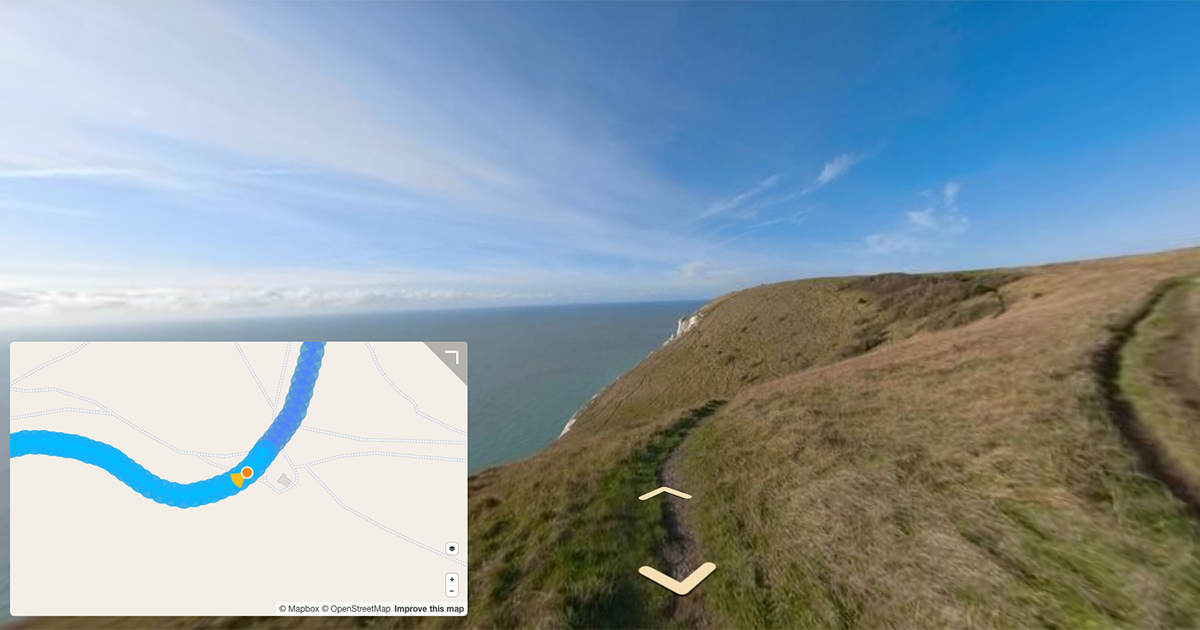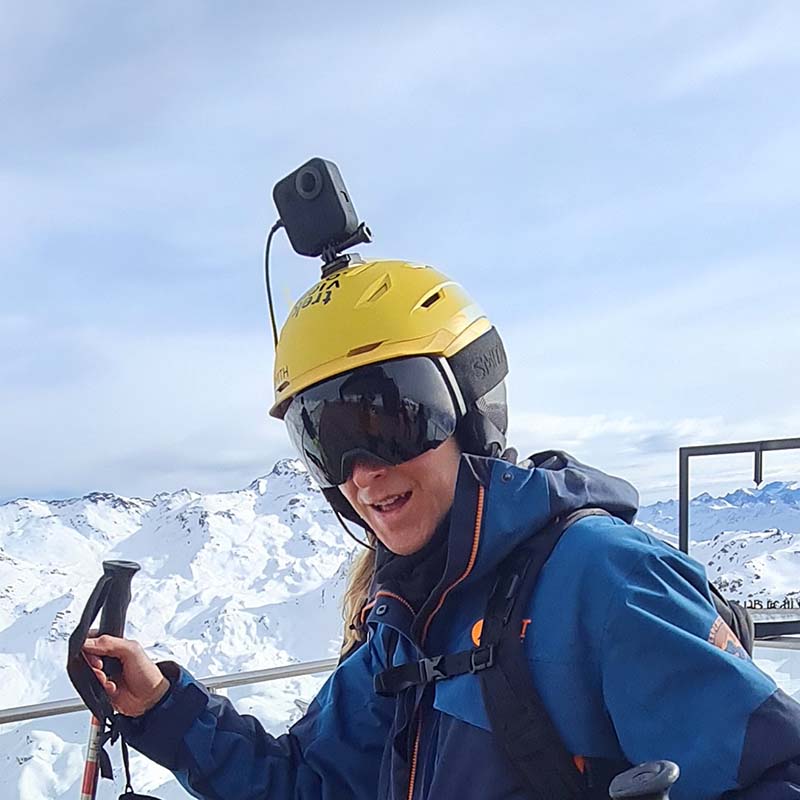In this post I will show you how to find the weather conditions at the time and location a photo was taken.
One of the things I wanted to do was allow for filtering of images using the weather metrics.
For example, searching for sequence containing images with a wide visibility. Or searching for images in snowy conditions.
In order to do this I needed a source of historic reference data to cross-reference against photos.
There are a tons of services that provide access to such historical data to varying levels.
Here are just a few I considered:
- OpenWeather History API: ourly historical weather data for any location on the globe via History API.
- Price: Currently £7 GBP per location
- WeatherStack Historical Weather API: look up historical weather data all the way back to 2008
- WeatherBit Historical Weather API: historical weather data from our network of over 120,000 stations reporting hourly weather data.
- Meteostat Hourly Data API: historical hourly observations for any geographic location.
- Price: Free (but you should donate, if you can)
I narrowed my choices to WeatherStack and Meteostat, simply due to price.
To test them, I used a photo taken in a fairly remote location (Helvellyn, Lake District, UK) because I wanted to test how measurements were reported when far from a weather station.
Here is the metadata in the photo needed to make the requests to the APIs.
exiftool -GPSLatitude -GPSLongitude -GPSDateTime -n GSAL1592.JPG
Exiftool by default prints data as Degrees, Minutes, and Seconds (DMS). Using the -n flag turns DMS into Decimal Degrees (DD), required for both the APIs.
GPS Latitude : 54.5255907
GPS Longitude : -3.003587
GPS Date/Time : 2022:07:13 12:13:07Z
WeatherStack Historical Weather API
My request to OpenWeather Historic Air Pollution API takes the following structure:
https://api.weatherstack.com/historical?access_key={apikey}&query={lat},{lon}&historical_date={date}&hourly=1&units=m&interval=1
For the test photo that gives;
https://api.weatherstack.com/historical?access_key=REDACTED&query=54.5255907,-3.003587&historical_date=2022-07-13&hourly=1&units=m&interval=1
The response contains a few sections that are well suited for my use-case…
- The location of the weather station
"location": {
"name": "Glenridding",
"country": "United Kingdom",
"region": "Cumbria",
"lat": "54.549",
"lon": "-2.952",
"timezone_id": "Europe/London",
"localtime": "2022-08-07 17:49",
"localtime_epoch": 1659894540,
"utc_offset": "1.0"
},
- The historical data for the day
"historical": {
"2022-07-13": {
"date": "2022-07-13",
"date_epoch": 1657670400,
"astro": {
"sunrise": "04:53 AM",
"sunset": "09:42 PM",
"moonrise": "10:21 PM",
"moonset": "03:36 AM",
"moon_phase": "Waxing Gibbous",
"moon_illumination": 97
},
"mintemp": 8,
"maxtemp": 15,
"avgtemp": 13,
"totalsnow": 0,
"sunhour": 15.8,
"uv_index": 3,
- The hourly data
Note, the hourly data section contains blobs of data representing hours during the date specified (&historical_date=2022-07-13&hourly=1&interval=1). The time property (e.g. "time": "1200", below), defines the time of the blob, in this case 12h00m (twelve o’clock in the afternoon). In total there are 24 hourly blobs for each day (0, 100, 200 … 2300);
"hourly": [
{
"time": "1200",
"temperature": 15,
"wind_speed": 25,
"wind_degree": 258,
"wind_dir": "WSW",
"weather_code": 116,
"weather_icons": [
"https://assets.weatherstack.com/images/wsymbols01_png_64/wsymbol_0002_sunny_intervals.png"
],
"weather_descriptions": [
"Partly cloudy"
],
"precip": 0,
"humidity": 71,
"visibility": 10,
"pressure": 1024,
"cloudcover": 37,
"heatindex": 15,
"dewpoint": 9,
"windchill": 13,
"windgust": 28,
"feelslike": 13,
"chanceofrain": 0,
"chanceofremdry": 0,
"chanceofwindy": 0,
"chanceofovercast": 0,
"chanceofsunshine": 0,
"chanceoffrost": 0,
"chanceofhightemp": 0,
"chanceoffog": 0,
"chanceofsnow": 0,
"chanceofthunder": 0,
"uv_index": 4
},
All the fields are described in the Weather Stack documentation here.
I cannot think of another weather measurement I would choose to add – the data is very comprehensive!
meteostat API
The request to get historic data from the meteostat API takes two parts. Firstly you must find the nearest weather station using the Nearby Station endpoint by passing the lat and lon of the photo;
curl --request GET \
--url 'https://meteostat.p.rapidapi.com/stations/nearby?lat=54.5255907&lon=-3.003587&limit=5' \
--header 'x-rapidapi-host: meteostat.p.rapidapi.com' \
--header 'x-rapidapi-key: REDACTED'
Which returns a series of weather stations like so sorted by distance nearest first,
"data": [
{
"id": "03779",
"name": {
"en": "Carlisle"
},
"distance": 45397
},
{
"id": "3222",
"name": {
"en": "Carlisle"
},
"distance": 45465.6
},
The distance value is reported in meters. In this case, the closest station id is 03779 (45397 meters / 45.397 kms from the photo).
Using this, I can then request the historic data
curl --request GET \
--url 'https://meteostat.p.rapidapi.com/stations/hourly?station=03779&start=2022-08-07&end=2022-08-07' \
--header 'x-rapidapi-host: meteostat.p.rapidapi.com' \
--header 'x-rapidapi-key: REDACTED'
Which returns 24 objects for each hour of that day;
{
"time": "2022-08-07 13:00:00",
"temp": 24.9,
"dwpt": 7.1,
"rhum": 32,
"prcp": null,
"snow": null,
"wdir": 307,
"wspd": 11.1,
"wpgt": 22.2,
"pres": 1025.5,
"tsun": null,
"coco": 2
},
All the fields are described in the meteostat documentation here.
Compared to Weather Stack it is more limited, that said, the key metrics I wanted to see; temperature, wind speed, and precipitation are all there.
Storing this data in the image
ExifTool supports many standard tags, but you can also define custom XMP tags.
Beware, custom tags will typically not be read by other software.
Firstly, you need to create a custom .config file describing your new tags.
In it you can define your tagnames, e.g. temperature_c and wind_speed_k in this example
MyExifConfig.config…
%Image::ExifTool::UserDefined = (
'Image::ExifTool::Exif::Main' => {
0xc7c1 => { Name => 'temperature_c', Writable => 'string' },
0xc7c2 => { Name => 'wind_speed_k', Writable => 'string' },
},
);
1; # Required to indicate the file ends correctly
Which can be used as follows;
exiftool -config MyExifConfig.config -temperature_c="15" -wind_speed_k="25" image.jpg
We're building a Street View alternative for explorers
If you'd like to be the first to receive monthly updates about the project, subscribe to our newsletter...



